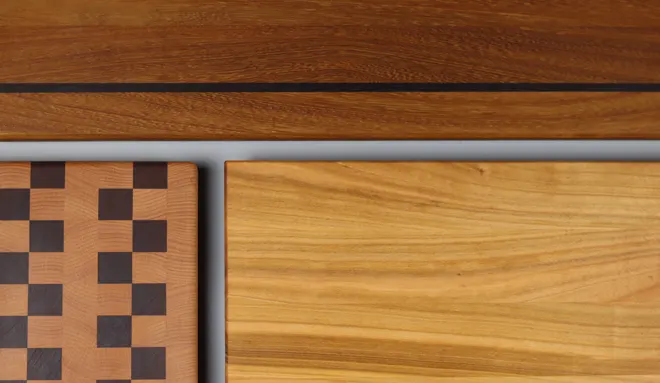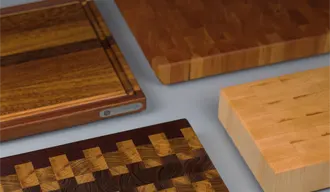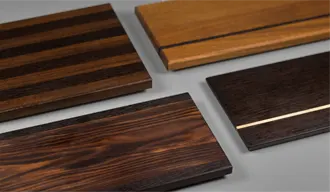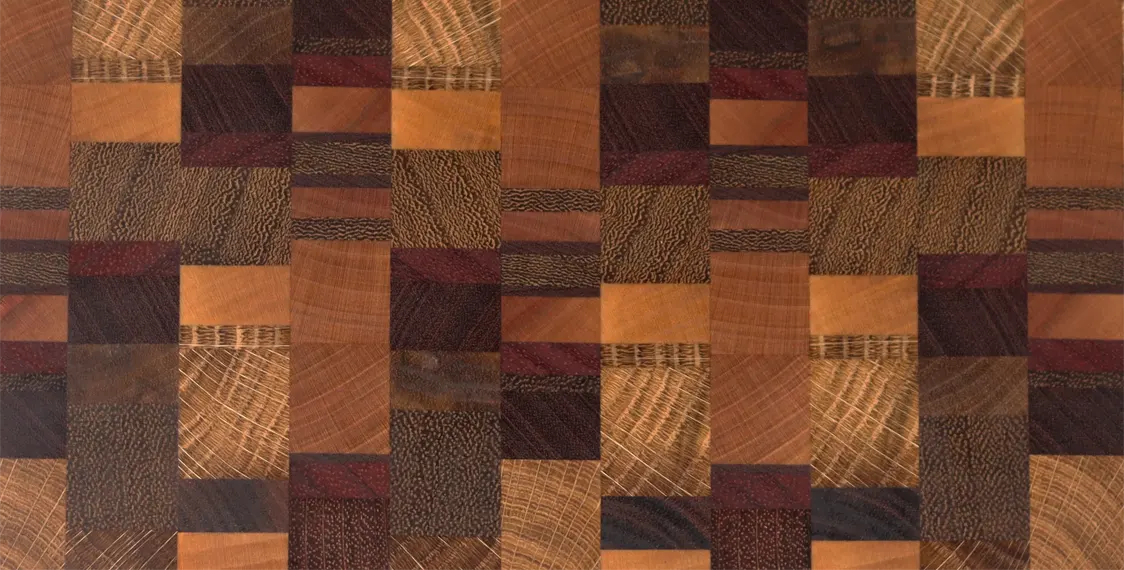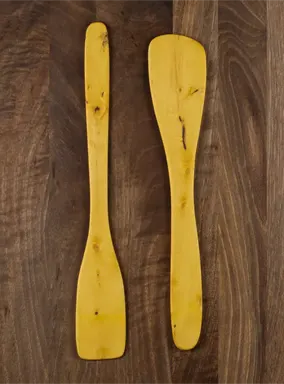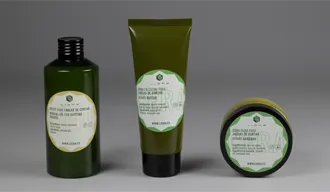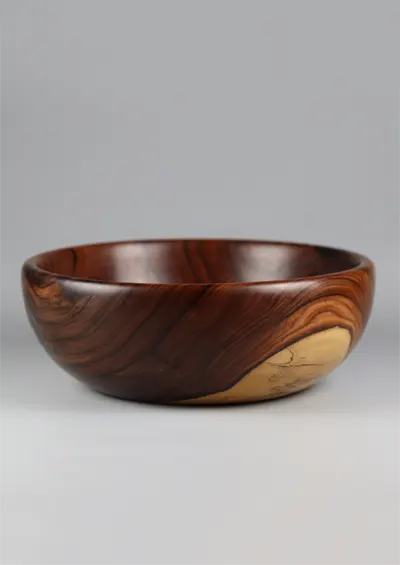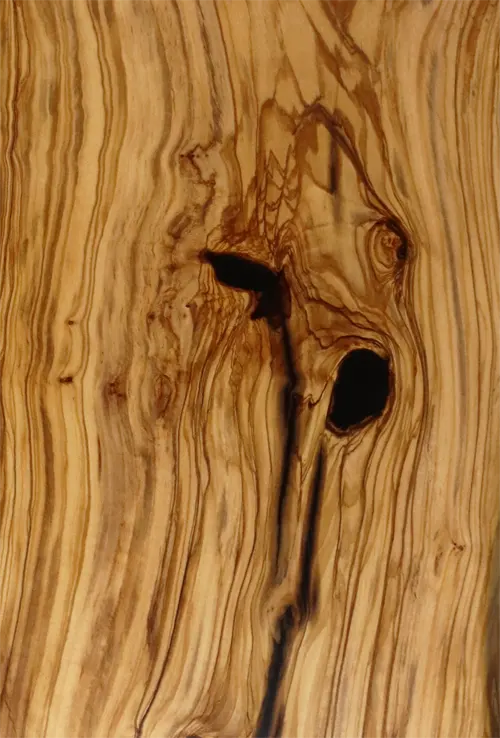Top 10 Moisture-Resistant Woods
Introduction
Moisture is one of the biggest enemies of wood. When exposed to humid or wet environments frequently, most species suffer from swelling, deformations or even rot. However, there are moisture-resistant woods that stand out for their natural resistance to water, thanks to their high density, oil or resin content, and or cell structure that hinders moisture penetration.
This article presents a technical and proven selection of 10 of the best woods for humid environments.
Comparison table of moisture-resistant woods
| Species | Density (kg/m³) | Natural extractives | Natural durability | Featured Uses |
|---|---|---|---|---|
| Teak | 660–750 | Very high | Excellent | Nautical, garden furniture |
| Ipe | ~1050 | High | Excellent | Decks, outdoor flooring |
| Iroko | 800–860 | High | Very high | Exterior carpentry, windows |
| Bangkirai | 850–1000 | High | Very high | Flooring, pergolas, outdoor furniture |
| Red Cedar | 370–400 | Moderate | High | Cladding, roofing, landscaping |
| Guayacán | ~1260 | Natural | Maxim | Nautical, mechanical parts, axles |
| Wenge | 865–910 | Moderate | High | Floors, bathrooms, kitchens |
| Alaskan Yellow Cedar | 400–500 | High | Very high | Nautical, coastal structures |
| White oak | 700–750 | Moderate | High | Cooperage, piles, wet structures |
| Karri | ~900 | High | High | Construction, Wet Environments |
1. Teak (Tectona grandis)
Teak is arguably the wood best known for its water resistance. Native to Southeast Asia, its natural content of oils, silica and rubber makes it virtually immune to decay.
That’s why it’s historically been used on boat decks, garden furniture , and luxury exterior cladding . Its soft touch and golden brown color also make it one of the most aesthetic.
2. Ipe (Handroanthus spp.)
Ipe, also called “Brazilian Walnut”, is extremely dense and resistant: its specific weight is around 1050 kg/m³. It is one of the most widely used moisture-resistant woods outdoors.
This feature, along with its high extractive content, makes it a favorite for high-end decking, marine gangways, and even harbor structures. It is so dense that it does not float in water. Its useful life outdoors can exceed 40 years without treatment.
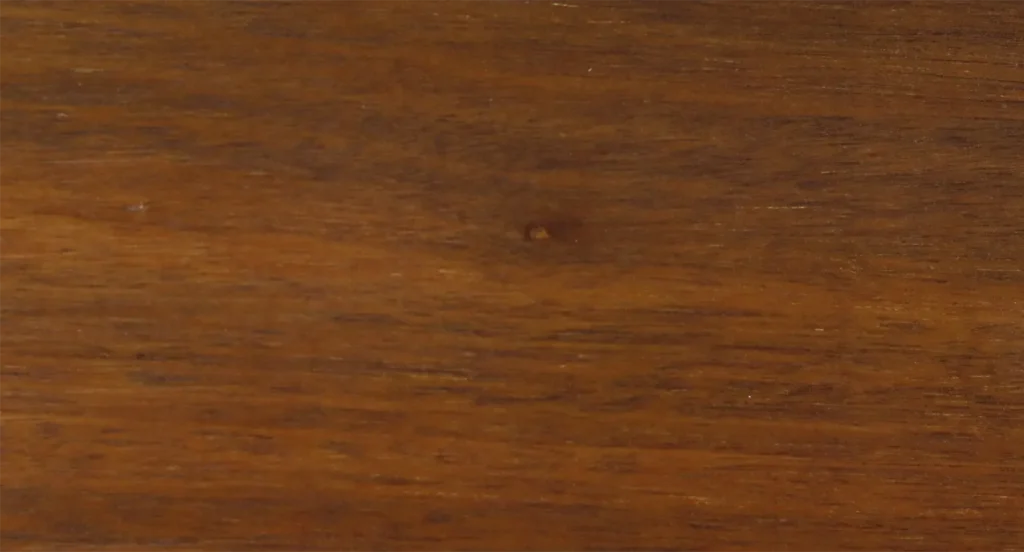
3. Iroko (Exalted Militia)
Known as “the African teak,” iroko offers a great, more affordable alternative to traditional teak. Its resistance to humidity and durability against fungi and insects make it ideal for doors, windows, exterior blinds and furniture exposed to the weather. Its color varies from gold to dark brown, with an attractive and stable vein.
4. Bangkirai (Shorea spp.)
Native to Southeast Asia, Bangkirai is highly valued in Europe for outdoor decking, pergolas and garden enclosures. It has a density that exceeds 850 kg/m³ and a very high natural resistance, even without chemical treatments.
It is common in outdoor urban planning projects due to its stability and resistance to termites and fungi. It is also used for pedestrian bridges and street furniture.
5. Red Cedar (Thuja plicata)
Western red cedar, although light, has excellent dimensional stability and good water resistance. Its characteristic aroma comes from volatile compounds that also act as a natural insect repellent.
It is used in façade cladding, roofs, fences, and saunas, as it resists humidity and drying cycles well.
6. Guayacán (Lignum vitae)
Guaiacan or Lignum vitae is one of the hardest and densest woods in the world (~1260 kg/m³) and one of the most durable against water and wear.
Its historical use includes ship propeller bearings, marine bearings and even lubrication-free hydraulic joints. It not only resists water, but also extreme friction. It is a niche option due to its cost and difficulty of work, but unbeatable in performance.
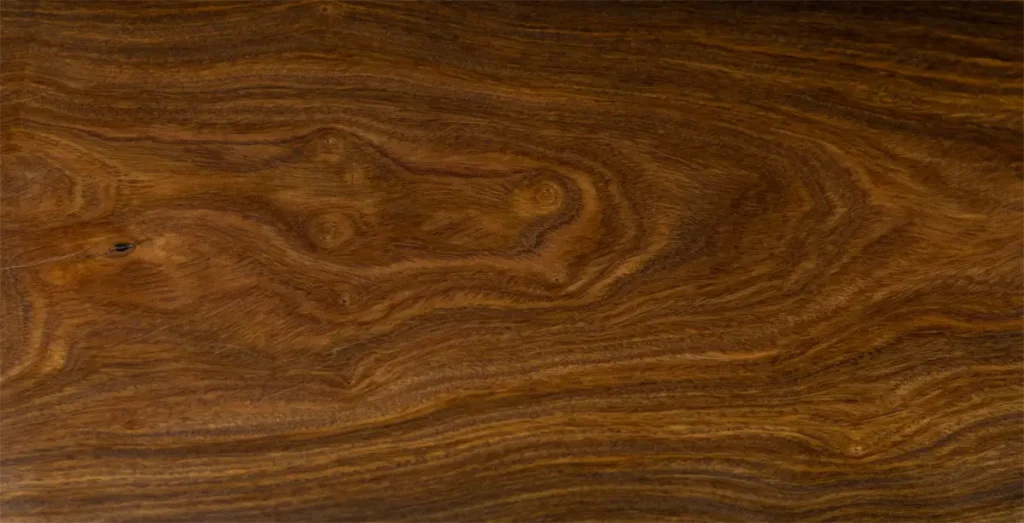
7. Wenge (Millettia laurentii)
Wenge is a tropical wood that combines deep beauty and resistance. With almost black dark brown tones and a dense vein, it is perfect for bathroom floors, kitchen furniture, and interior spaces with high ambient humidity.
Its hardness and stability make it resistant to deformation, but its machining requires high-quality tools.
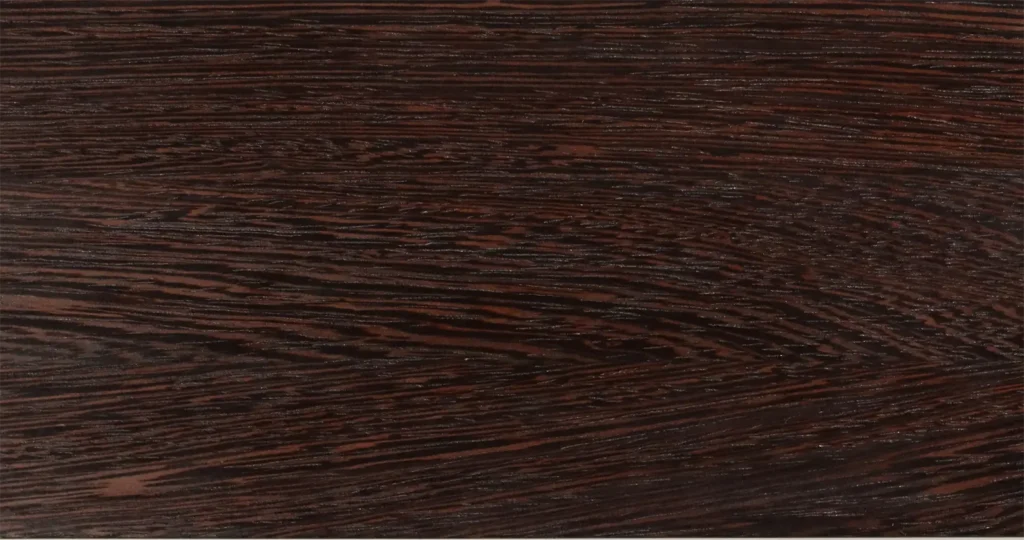
8. Alaskan Yellow Cedar (Cupressus nootkatensis)
Resinous and aromatic wood, highly valued in North America for demanding outdoor uses. It is used in water skis, nautical parts, and structures exposed to the sea.
It resists biological agents, including mold, fungi and insects, very well thanks to its natural oils.
9. White oak (Quercus alba)
White oak is a leafy wood well known for its use in cooperage (barrels) thanks to its closed grain, which prevents liquid leakage and its tannin content prevents the proliferation of bacteria.
But what’s most impressive is their structural use: in Venice, the pilings that support the city are made of submerged oak, where they have remained stable for centuries. Its resistance in humid or aquatic environments is legendary.

10. Karri (Eucalyptus diversicolor)
Native to Australia, karri is a hardwood, dense (~900 kg/m³) and naturally resistant to moisture. It is used in heavy construction, structures in wet weather , and wooden bridges.
Its resistance to termites and fungi makes it highly valued in outdoor architecture without the need for many treatments.
Conclusion on moisture-resistant woods
Woods that stand out for their resistance to moisture have in common a dense structure and the presence of protective natural compounds. Some, such as teak, ipe or guayacán, offer extreme performance in marine or tropical environments. Others, such as red cedar or white oak, offer remarkable technical performance.
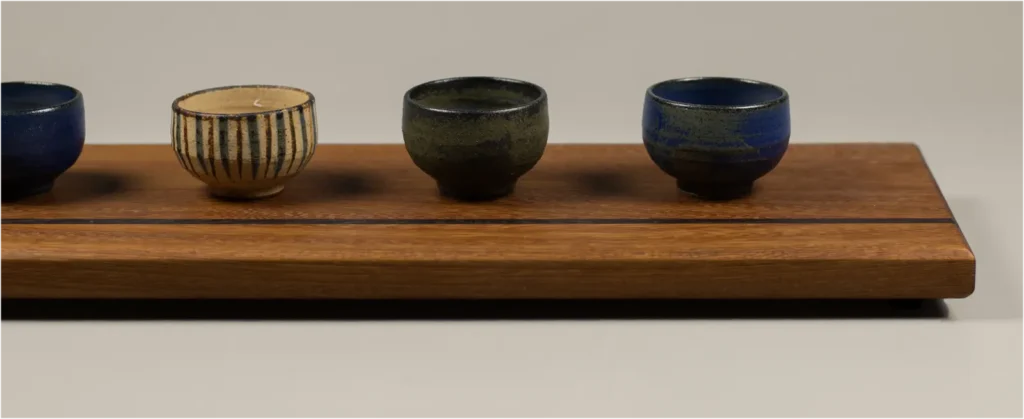
Depending on the use (nautical, decking, outdoor furniture, indoor wet areas), it is key to select the most suitable species. And while many of these woods hold up on their own, good maintenance—oiling, sealing, and cleaning—greatly extends their lifespan.
Frequently Asked Questions (FAQ)
What maintenance do these woods require outdoors?
Although many of these moisture-resistant woods do not require chemical treatment, it is advisable to apply oils or stains once or twice a year to protect the color and improve surface resistance to standing water.
Can I use these woods for a cutting board?
Only some of them, such as teak or iroko, are suitable for direct food use. Woods such as ipe or guaiacan are too hard and can damage knives. In addition, some contain extractives that could be transferred to food.
What does it mean that moisture-resistant woods have “natural durability”?
It is the ability to resist fungus, insects, and rot without treatments. It is rated from 1 (excellent) to 5 (not durable), according to standards such as those of EN 350. In this list, all woods have class 1 or 2.
Otras entradas del blog
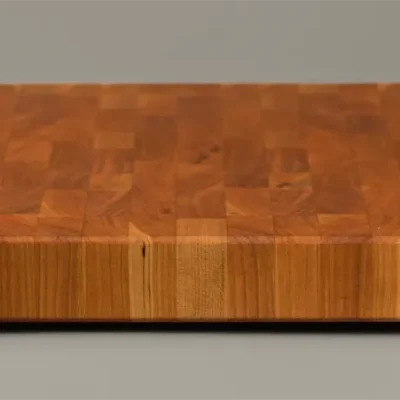
Wooden Cutting Board: Complete Guide
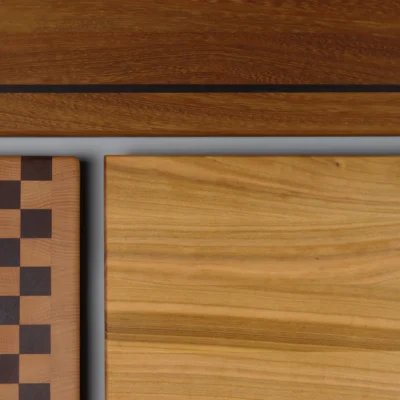
Do I need a hardwood for a cutting board?

Sapele Wood: Uses and Characteristics
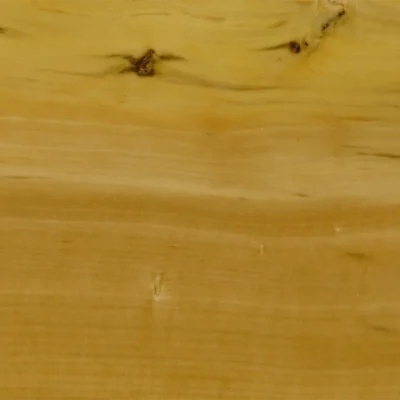
Boxwood: Uses and Characteristics
Nuestras tablas de cortar:
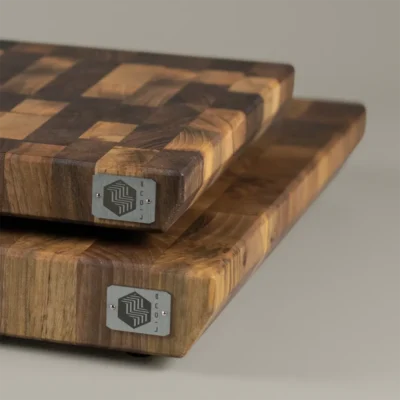
Pura
Walnut walnut butcher block
(copia)
Pura
Walnutwalnut butcher block
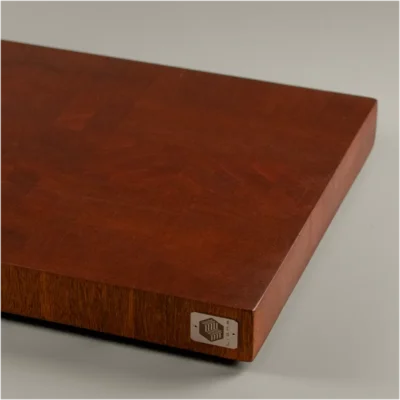
sapele end grain
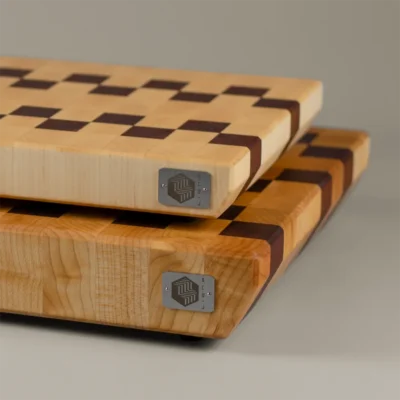
Rubra
butcher block
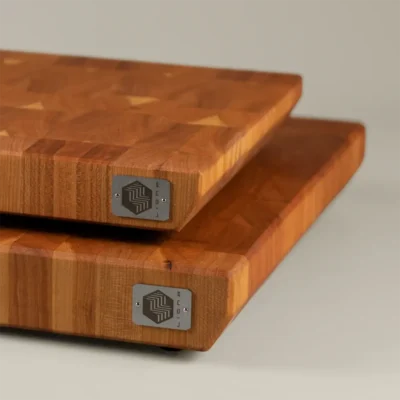
Pura
Cherry cherry butcher block
Pura
Cherrycherry butcher block
